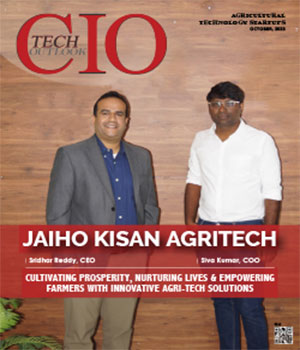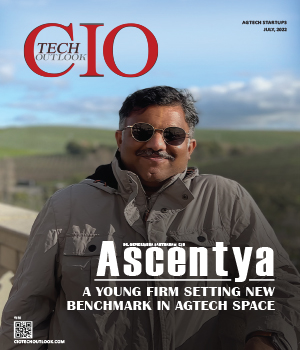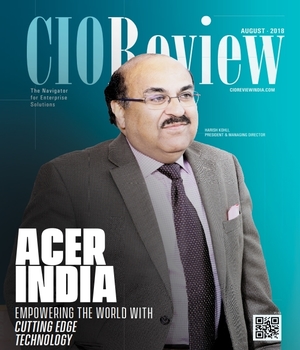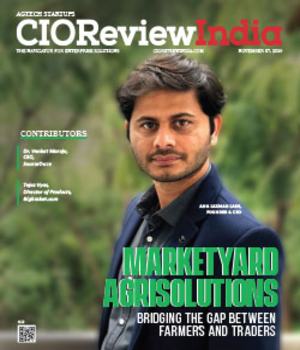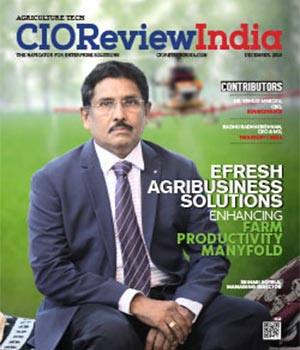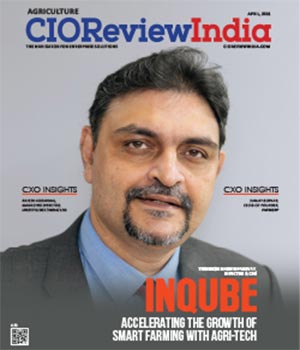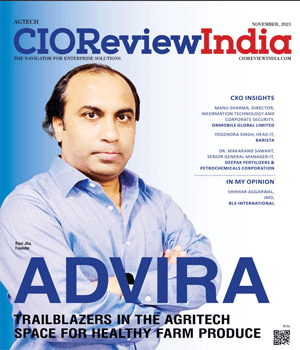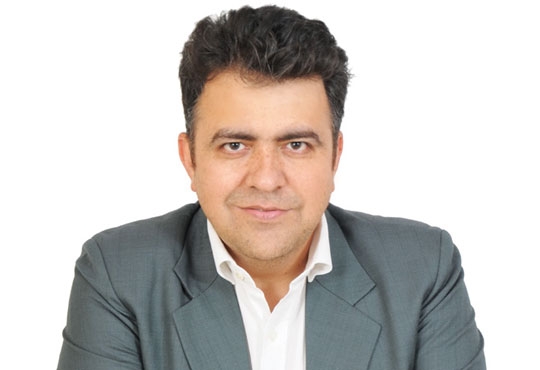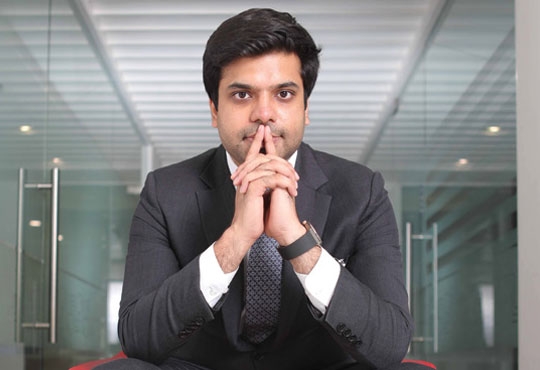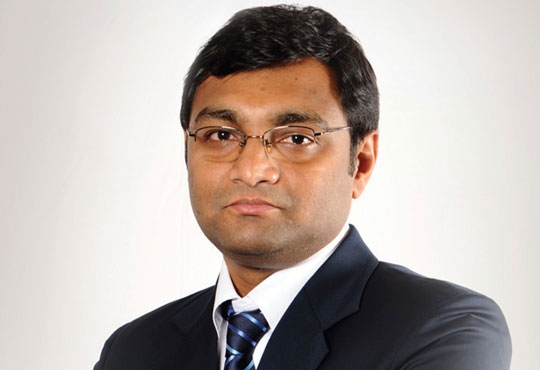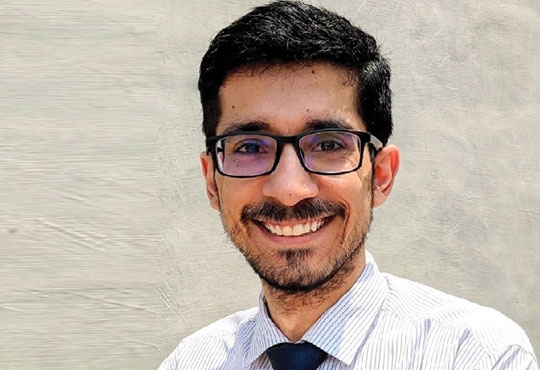
DIGITAL...DATA...FOOD?
By Edward Rybicki, Global CIO, Mérieux NutriSciences | Wednesday, 10 October 2018, 06:26 IST
 Do you ever think about the food you consume and where it comes from? Or how quality is enforced? Food is essential to our survival, and yet few consumers have a basic understanding of how food safely arrives at our tables. An entire supply chain of food growers, distributors, processors and retailers work together—to help ensure overall health and safety. Despite these efforts, food safety remains a nationwide issue. In fact, the Center for Disease Control and Prevention (CDC) estimates that 48 million foodborne illness cases occur in the United States every year. At least 128,000 Americans are hospitalized, and 3,000 die after eating contaminated food. Throughout the world, a complex set of relationships between government regulators, global health entities, food companies and quality suppliers exist to help verify the safety of the food we consume. At the core of all these alliances lies science, as the ability to test food for contaminants was born in scientific methods dating back to over 100 years ago. While technology recently entered the scene to automate many laboratory tests, the original methods to confirm food safety remain largely unchanged. Of course, there are always exceptions since it is impossible to test every piece of food before it reaches the consumer. The volume of food entering the market is too great and the channels they move through are too complex to test every item. As consumer demand increases, these issues will continue to only grow more intricate. You’ve all read about food recalls for contaminated products, some of which results in life-threatening situations. In 2015, the US alone saw 626 food recalls, costing food companies and manufacturers over $10,000,000 in direct costs plus the cost of a damaged reputation and potential litigation. There is no denying the steaks are high (yes, I spelled it like that on purpose—who said IT folk can’t have a sense of humor?) and the pressure is even higher on the food industry to enforce government regulations at every step of the supply chain. These developing needs are not local to the US, but actually affect consumers on a global scale. This is driving change that will affect the future of the food industry.
Do you ever think about the food you consume and where it comes from? Or how quality is enforced? Food is essential to our survival, and yet few consumers have a basic understanding of how food safely arrives at our tables. An entire supply chain of food growers, distributors, processors and retailers work together—to help ensure overall health and safety. Despite these efforts, food safety remains a nationwide issue. In fact, the Center for Disease Control and Prevention (CDC) estimates that 48 million foodborne illness cases occur in the United States every year. At least 128,000 Americans are hospitalized, and 3,000 die after eating contaminated food. Throughout the world, a complex set of relationships between government regulators, global health entities, food companies and quality suppliers exist to help verify the safety of the food we consume. At the core of all these alliances lies science, as the ability to test food for contaminants was born in scientific methods dating back to over 100 years ago. While technology recently entered the scene to automate many laboratory tests, the original methods to confirm food safety remain largely unchanged. Of course, there are always exceptions since it is impossible to test every piece of food before it reaches the consumer. The volume of food entering the market is too great and the channels they move through are too complex to test every item. As consumer demand increases, these issues will continue to only grow more intricate. You’ve all read about food recalls for contaminated products, some of which results in life-threatening situations. In 2015, the US alone saw 626 food recalls, costing food companies and manufacturers over $10,000,000 in direct costs plus the cost of a damaged reputation and potential litigation. There is no denying the steaks are high (yes, I spelled it like that on purpose—who said IT folk can’t have a sense of humor?) and the pressure is even higher on the food industry to enforce government regulations at every step of the supply chain. These developing needs are not local to the US, but actually affect consumers on a global scale. This is driving change that will affect the future of the food industry.
The requirement to move food around the world quickly, safely and in larger quantities is increasing at a faster pace now more than ever before. These pressures are driving a much needed digital “evolution” in the food industry. This is similar to what we’ve seen in other industries, but with implications that will affect every person who consumes food and beverages. Without the interception of digital innovation—the ability of the food industry to keep consumers safe, while also satisfying the growth in demand will be nearly impossible. Enter technology; specifically the use of data and the availability of “digital” insights previously unknown or unseen. This is where the crossroads of traditional science and data science meet and begin to merge in a way that will affect the food industry and the consumers of food products far into the future. Food manufacturers and processors are beginning to digitize their processes, environmental samples and data points so they can pinpoint the possibility of contamination and/or possible recall before the issue spreads. As the CIO for a global company known for food safety testing, I see an internal drive towards leveraging data as the key factor in reaching our mission of protecting consumer health from farm to fork. Mérieux NutriSciences has invested in technologies that will aggregate data from multiple sources (applications, lab devices, customers, government agencies) to be able to formulate the values relevant to protecting consumers’ health.
As we leverage digital into our approach, there are 3 pillars for success that can be recycled in any industry:
1. Manage It—Enable a scalable, cloud-based, data management platform that serves as the engine to move, cleanse and store data
2. Model It—Create core data models that align to your key services so they are constantly enriched and offer high reusability
3. Enable It—Enable all types of use of your data. This is key as it can be used for industry analysis, customerspecific analysis, digital applications and internal reports. Keeping an “open-source” mindset to the enablement of data will allow for the greatest value to be achieved, as it is too myopic to design the architecture for a single purpose.
Like many industries, the usual set of challenges exists for any CIO at this stage of digital infancy. You may face a challenge such as gaining a common understanding of a topic that means something different to each individual you engage. Other challenges include setting up the right architecture with the ability to sustain the future in a very dynamic corner of the IT world, or showing iterative value while cleaning up the technical architecture of the past. All of these are complex, but not impossible to overcome. By now, as a CIO, you are aware that the business world is transforming and data is the key to that transformation. But in any industry, data without context and analysis is useless. In my opinion, data has become the primary value-inducing component of the IT world, now that infrastructure and applications are becoming commoditized. Data will drive companies to be more relevant to their customers and, in cases like Mérieux NutriSciences, enhance the health and wellbeing of people around the world.
CIO Viewpoint
Rethinking Smart Technologies to ensure...
By Ramneek Kalra, IEEE Member
Data Science & Machine Learning In Fintech
By Jainendra Kumar, Head - Global Delivery Center-India & Senior Director Product Development Software, Diebold NixDorf
By Chander Khanduja, CIO, Luminous Power Technologies (P) Ltd
CXO Insights
Shaping The Future Of The Visa Sector:...
By Shikhar Aggarwal, JMD, BLS-International
What's Cooking In The Latest Cyber Security...
By Dr. Makarand Sawant, Senior General Manager-IT, Deepak Fertilizers & Petrochemicals
How AI-Focused StartUps Can Transform Student...


